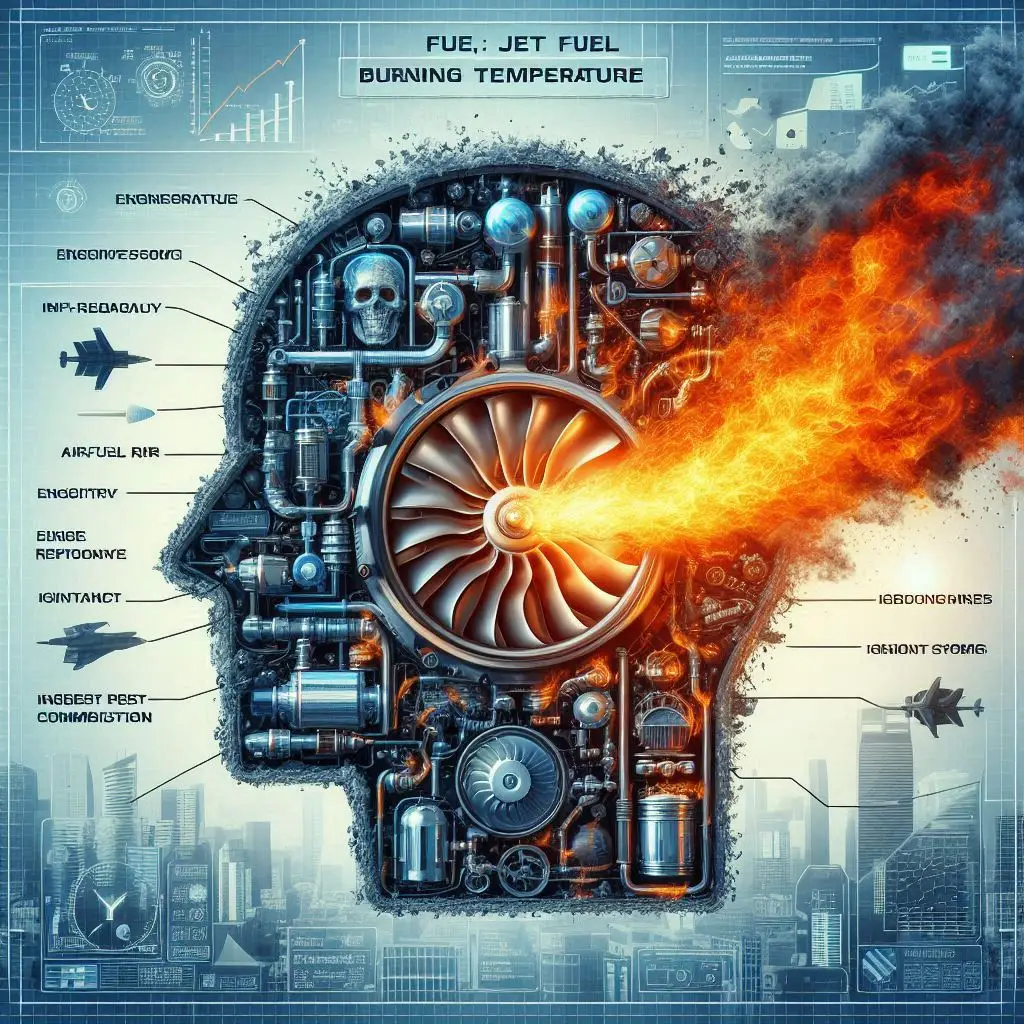
Jet fuel burning temperature
Let me talk about jet fuel burning temperature today.
Jet fuel burning temperature is a vital component of combustion science and aviation, essential to the effective and secure running of aircraft engines. Investigating the makeup of jet fuel, the combustion process and the variables affecting its burning temperature are crucial to comprehending the temperature at which it burns.
The air-fuel ratio, engine architecture, ignition systems, combustion efficiency, and fuel composition all have a complicated role in determining the burning temperature of jet fuel. It is crucial to comprehend and manage these factors in order to maximize engine output and fuel economy as well as guarantee the dependability and safety of aviation engines. Aircraft engines are carefully engineered to take these variables into account in order to balance attaining high combustion temperatures for efficiency with avoiding temperatures that can jeopardize the integrity of engine components. The design of jet engines is constantly being shaped by developments in materials science and combustion technology, with the goal of increasing overall performance, lowering emissions, and increasing efficiency.
A wide range of issues, such as environmental concerns, attempts to lower emissions, improvements in engine design, the use of alternative fuels, and advances in materials science, are closely related to the burning temperature of jet fuel. Combustion technology will continue to advance due to the aviation industry's constant quest for more sustainable practices, reduced emissions, and more efficiency. In order to balance the demands for performance, efficiency, and environmental responsibility, scientists, engineers, and industry stakeholders work together to guarantee that the burning temperature of jet fuel remains a dynamic and developing feature of aviation.
A specific kind of fuel made specifically for use in aircraft engines is called jet fuel. Jet A and Jet A-1, which are kerosene-based fuels, are the most used kind of jet fuel. The fundamental components of these fuels are carbon and hydrogen, which are hydrocarbons. Jet fuel contains a variety of hydrocarbon compounds, although long-chain alkanes are the most common kind.
Within the combustion chamber of an aviation engine, jet fuel burns. Heat is produced as a result of the fuel's hydrocarbons reacting with atmospheric oxygen during this process. For a simple hydrocarbon, the combustion process may be shown as follows, where a hydrocarbon molecule is denoted by "CnHm":
CnHm + (n + m/4)O2 → nCO2 + m/2H2O + Heat
Heat is emitted during this reaction, and as byproducts, carbon dioxide (CO2) and water (H2O) are created. Numerous variables affect the temperature at which this combustion takes place.
An important component to consider is the air-fuel ratio or the proportion of air to fuel during combustion. The exact ratio at which all of the fuel and all of the oxygen react and no excess of either is left behind is known as the stoichiometric or optimum air-fuel ratio. A departure from this ratio may lead to undesired byproduct generation or incomplete combustion.
An further element influencing the burning temperature is the engine's combustion efficiency. Lower temperatures might result from inefficient combustion because not all of the fuel is thoroughly oxidized. Achieving the best possible combustion efficiency depends on a number of factors, including fuel injection system design and combustion chamber turbulence.
The burning temperature is also influenced by the kind of aircraft engine. The combustion properties of various engine designs, such as turbofan or turboprop engines, differ. For instance, the bypass air stream in turbofan engines aids in temperature regulation and boosts overall performance.
Moreover, the combustion process is started by the ignition source, which is usually a spark or igniter plug. The particular fuel-air combination and the ignition system's design determine the temperature needed for ignition.
The temperature at which jet fuel burns is a crucial factor in both engine performance and safety. While too-low temperatures may cause incomplete combustion and decreased efficiency, excessive temperatures can harm engines. Engine makers carefully consider elements like the thermal management system and the materials used in engine components when designing engines to run within a certain temperature range.
Apart from the aforementioned parameters, environmental conditions also have a substantial influence on the temperature at which jet fuel burns. A growing amount of effort is being made to improve combustion processes in order to reduce the environmental effect of aviation, as sustainability and emissions reduction become more and more important to the industry.
Reducing the amount of pollutants, including nitrogen oxides (NOx), released during combustion is one part of this optimization. Elevated temperatures during combustion may lead to the production of NOx, a component that pollutes the air and aids in the creation of ozone at high elevations. Research and development efforts by engine manufacturers are concentrated on implementing designs and technology that reduce NOx emissions without sacrificing overall engine efficiency.
The search for more fuel economy has prompted research into new engine architectures and alternative fuels. Lowered overall temperatures and lower fuel usage are made possible by innovations like high-bypass ratio engines, which have a higher percentage of air bypassing the combustion chamber. Furthermore, the emergence of alternative fuels—like biofuels and synthetic fuels—aims to provide more environmentally friendly alternatives with perhaps distinct combustion properties.
Furthermore, the temperature at which jet fuel burns is directly impacted by developments in the field of materials science. Higher working temperatures are now possible for several engine components thanks to the development of heat-resistant materials, which increases overall efficiency. For instance, ceramic matrix composites are being investigated for use in parts exposed to high temperatures, which might improve the longevity and efficiency of aviation engines.
The temperature at which jet fuel burns is also influenced by the operating circumstances of an aircraft. Environmental elements like pressure and temperature may have an impact on how efficiently fuel burns. In order to sustain peak performance in a variety of settings, engine control systems are built to adjust to changing circumstances.
https://www.novintrades.com/products/28?title=jet-fuel

